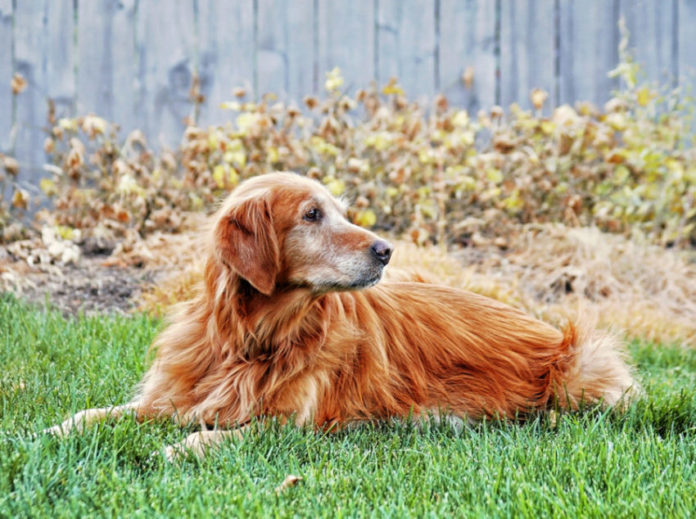
Ensure success when adopting an older dog with these helpful tips.
Dogs are considered teenagers when they’re around two. A few years after that, they’re cresting middle age, and by seven, they’re considered seniors. For this reason, many people go for adopting puppies over older adult dogs. There’s a perception that mature dogs are set in their ways, are untrainable, and can’t be easily blended into a household.
This isn’t necessarily correct. Contrary to popular belief, in fact, older dogs can sometimes be easier to train than pups. Faye Owen, a canine behavior consultant, says that older dogs generally have a longer attention span when compared to puppies. She adds that if the dog has lived in a good former home, he may already be housetrained, understand basic commands such as “sit”, and know how to walk on a leash, which makes your job much easier once you adopt him.
Some rescue organizations and shelters have training programs in place that teach simple commands to the older dogs in their care, thereby making them more adoptable. “There is also a very good program out there called Sue Sternberg’s Train to Adopt, which is showing some good results in increasing adoption and retention rates at shelters,” says Faye.
Another advantage is that older dogs usually don’t have the same high energy levels as puppies, which can make them easier to care for, especially if you are getting older yourself. Dogs of all ages need regular exercise, of course, but older canines often aren’t as physically demanding as pups, which means walks and playtimes don’t take up as much time and energy.
 Tips for successful integration
Tips for successful integration
When adopting an older canine, Faye has some advice gleaned from her experience working with rescue dogs.
• “The first thing I tell people is that it can take three months to settle a dog into a new environment,” she says.
• “Do not overwhelm him during the first few days. A good routine is helpful, so he can acclimatize to his new home.”
• If it becomes apparent that the dog does need some basic training, Faye recommends investigating positive, reward-based dog training services that offer private sessions, and as soon as possible “Problems are best addressed when they first arise, rather than waiting for them to become entrenched.” When training, remember to give the dog immediate feedback in the form of praise, a treat or off-leash time in a safe environment.
• People are often concerned about blending an older dog, especially a rescue, into a multi-animal household, or a family with young children. This is certainly a consideration, but if you have adopted the dog from a reputable shelter or rescue that has assessed his behavioral traits and addressed any serious problems, then it shouldn’t necessarily be cause for worry. “There are cases where concern may be warranted, but these are not due to the dog’s age,” says Faye. When adopting an older dog, she recommends you first find out why the dog is in the shelter; research his history, if known; and ask the staff what kind of testing has been done to evaluate his temperament and behavior.
Case reports

1. Gage
Professional dog trainer Melony Phillips agrees that it’s important to inquire about an adult or older dog’s history when adopting. But in the case of her own dog, an Old English Mastiff named Gage, now seven, there wasn’t much history available.
She learned from the shelter that Gage had been found roaming the streets; his person did not reclaim him, so he was placed in a foster home. “My husband and I had the opportunity to meet Gage’s foster family,” Melony says. “We could tell he had been loved and well cared for.”
If little previous history is known about a dog, but he has spent time in foster care or been enrolled in a shelter training program, it’s a good idea to try to meet the foster family or the handler/trainer working with the dog. In Gage’s case, a meeting with the foster family went same day. Gage is now a Canine Good Citizen, and enjoys rally obedience classes and hikes in the mountains.
 2. Sahara
2. Sahara
Gage’s roommate is an eight-year-old Cavalier King Charles spaniel named Sahara, who belonged to one of Melony’s clients. When the client passed away at the age of 98, Sahara came to live with the Phillips family.
“It was the easiest re-home we’d ever done,” Melony says. “Sahara came in as if she belonged, and it seemed all our current animals decided she was exactly where she was meant to be.” She adds that Sahara’s re-home was easy because her history wasn’t filled with a great deal of trauma, as some dog’s histories are, and she had prior experience living with other dogs and cats.
3. Jack
It’s important to keep in mind that older dogs sometimes come with age-related health problems that you’ll have to factor into the care regime. But if you have the resources and patience to deal with these issues, they needn’t be a deterrent. Sherry Silvers recently took on the care of her son’s Australian shepherd mix, Jack, who is 12 years old. Her son had rescued Jack when the dog was two years old, but when Jack got older he was diagnosed with diabetes and arthritis. Sherry offered to keep him, since her son couldn’t afford the veterinary costs. You might think that Jack’s health status would be a minus for Sherry, especially as she’s a retiree, but adopting Jack has worked out well for her.
“I love having an older dog, arthritis and all,” she says. “At night, he comes into the bedroom and groans as he lies down, and I know exactly how he feels.” Sherry adds that her mother died recently at 89, and having Jack in her life has helped her with her loss. “I had the honor of caring for my mother, and now I find joy in caring for Jack. If I get another dog, it will be an older dog – one that an older person can no longer care for, or one that a younger person can no longer afford to care for. Older dogs make the best companions!”
